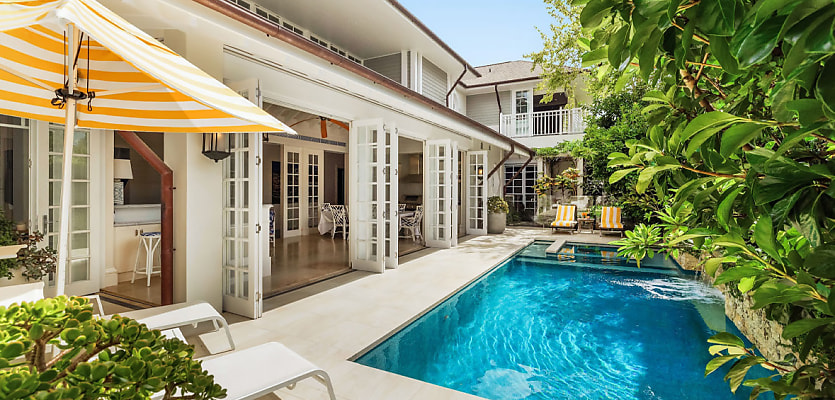Luxury residential properties in Australia remain more affordable than in other global markets, with Perth and the Gold Coast emerging as the country’s top prime markets.
Knight Frank’s Wealth Report 2025 revealed that the Australian capitals’ residential luxury property market remains more affordable than many other worldwide cities.
The report found that US$1 million – equivalent to $1.61 million – would buy 45 square metres of luxury real estate in Sydney, more than in 10 other cities worldwide.
For the same price, buyers could buy 87 square metres of luxury real estate in Melbourne, 102 square metres in Perth, and 114 square metres in Brisbane.
In regional areas, Gold Coast emerged as the most attractive market nationwide, with US$1 million getting luxury residential buyers 119 square metres.
In comparison, luxury residential buyers in the three most expensive cities in the world – Monaco, Hong Kong, and Singapore – would, for US$1 million, get 19 square metres, 22 square metres, and 32 square metres, respectively.
Similarly, luxury residential buyers in London and New York would get 34 square metres, while US$1 million would get buyers 37 square metres in Los Angeles and 42 square metres in Paris.
Head of research at McGrath Estate Agents, Knight Frank’s partner in Australia, Michelle Ciesielski, said the Australian market has been attracting international and local buyers.
“Australia’s prestige property has increasingly become more competitive on an international scale with the lower Australian dollar over the past year which is attracting expats to buy back home,” Ciesielski said.
Following fluctuations in the exchange rate, some cities have experienced a slight increase in buying power for US$1 million, with Sydney now worth 45 square metres compared to 43 square metres 12 months ago.
“We continue to experience growing buying activity with expats who are taking advantage of the favourable currency exchange and the strongest demand remains in well-established lifestyle locations for when they eventually return home,” Ciesielski said.
Although more favourable than in other countries, the report found that, as prices have increased, the amount of luxury residential property buyers can acquire for their money has decreased.
Sydney saw its square meters drop by 33 per cent in the last decade, while Melbourne’s surface dropped by 19 per cent.
In 2014, US$1 million bought 67 square metres of luxury real estate in Sydney compared to 45 square metres in December 2024, while Melbourne would buy 109 square metres 10 years ago compared to 87 square metres now.
Similarly, for the same price, the square metres of Brisbane and the Gold Coast have fallen by 13 per cent and 25 per cent, respectively.
Perth was the only city where the surface of luxury real estate increased over the last 10 years, from 94 square metres in 2014 to 102 square metres in 2024.
The Knight Frank Wealth Report 2025 found that despite having smaller surfaces, luxury residential prices continued to rise globally in 2024, increasing by 3.6 per cent.
In Australia, Perth recorded the highest luxury residential price growth nationwide with a 5.2 per cent increase.
Brisbane and the Gold Coast followed suit, recording a price increase equal to or above the global average at 4.1 per cent and 3.6 per cent, respectively.
The Sydney luxury market recorded the lowest price growth nationally in 2024 with a 1.1 per cent increase.
Conversely, Melbourne was the only Australian capital city to see its luxury resident market price drop by -1.9 per cent.
Out of the 100 global markets monitored in Knight Frank’s Prime International Residential Index (PIRI), 77 experienced positive annual price growth, three remained stable, and 20, including Melbourne, saw price declines.
According to the report, Seoul’s luxury residential market experienced the highest price growth worldwide at 18.4 per cent, followed by Manila with 17.9 per cent growth, and Dubai with a 16.9 per cent increase.
McGrath Estate Agents associate director, Adam Ross, said as prices moderate in 2025, more opportunities would arise for local buyers of high-end real estate in Australia.
“We expect the two largest capital cities will lead the opportunities given the weight of money is heavily skewed there, but we can’t underestimate the further prestige opportunities across regional Australia like the Gold Coast, Byron Bay and the Mornington Peninsula,” Ross said.
Ross said while 2025 may be the year for savvy investors to upgrade their homes, as price growth remains more conservative, the challenge will be finding the perfect luxury property in this tightly held market.
“At any price point in the prestige market, lifestyle plays a huge factor, especially when they seek a home positioned on the waterfront where buyers need to act fast when they come to market,” Ross concluded.









You are not authorised to post comments.
Comments will undergo moderation before they get published.